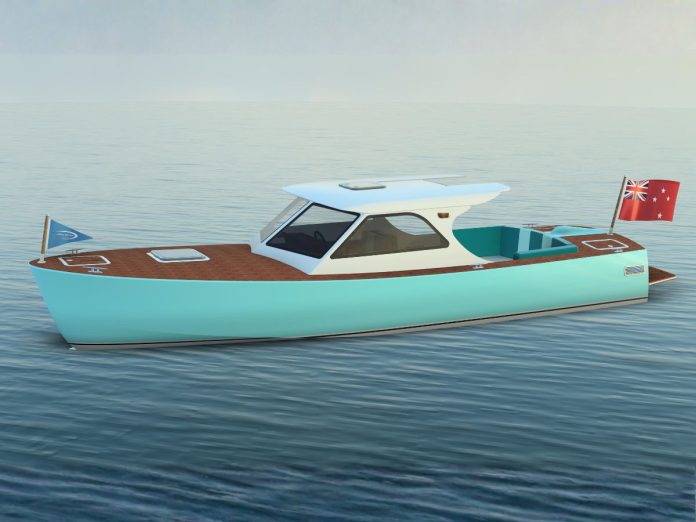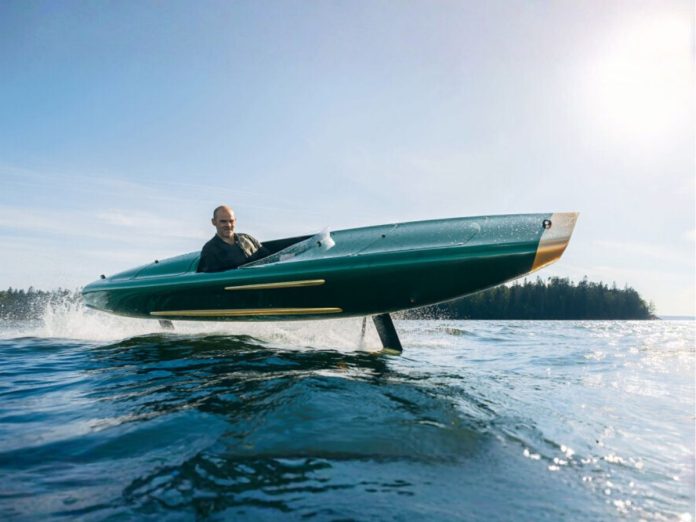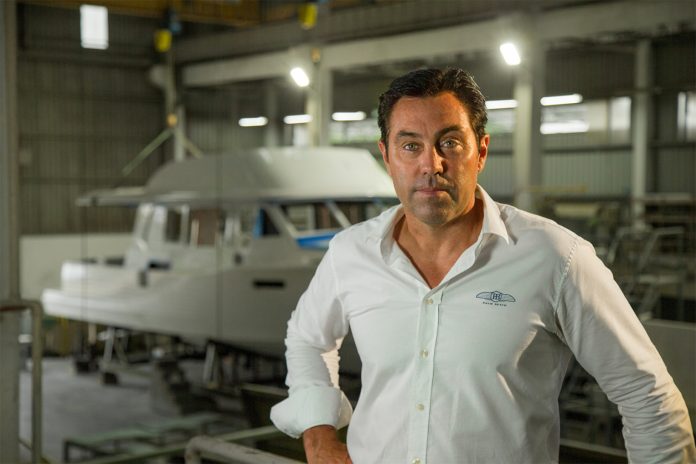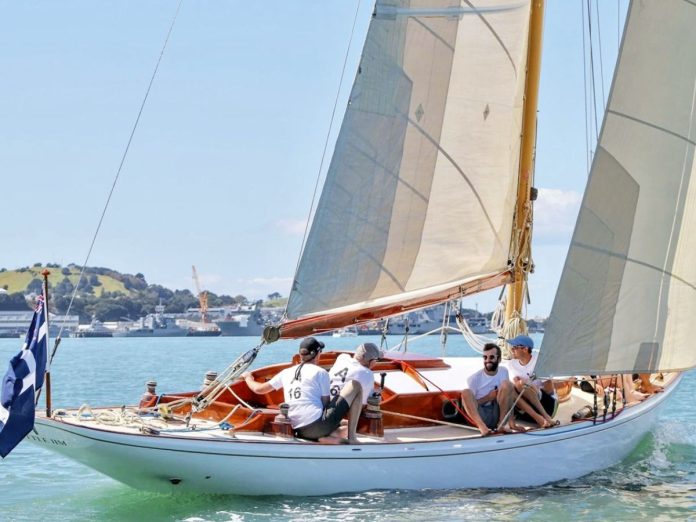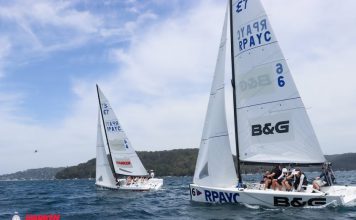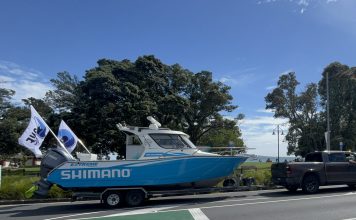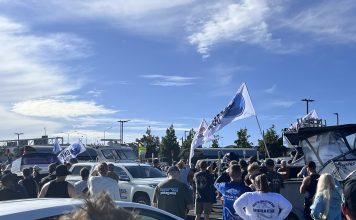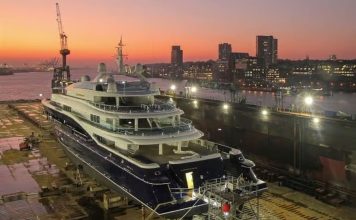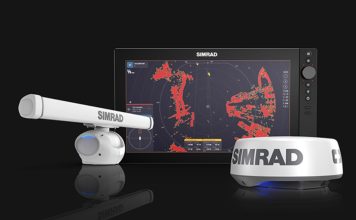From Hinckley to Dibley
Recently we looked at the Hinckley Picnic Boat, a design that shook up the day-boat scene in 1994 with lobster-boat lines, jet-drive manoeuvrability, and yacht-level refinement. While rare in New Zealand, the concept resonated with Kiwi designer, Auckland’s Kevin Dibley, who has reimagined the Picnic Boat idea with a distinctly local twist.
His Dibley Picnic Boats — the P25, the 28 Weekender now in build, the 35 Weekender, and a 52-footer designed for coastal cruising — draw inspiration from East Coast USA lobster boats but adapt the style for New Zealand waters and lifestyles.
The P25: where it all began
The first Dibley Picnic Boat was the P25, designed in 2008 for South Island yachtsman Lawrence Heath and built by Cresta Boats in Christchurch. At just over seven metres, it had the curves of a 1920s runabout and the efficiency of a modern hull. In fact there was a lot of influence from an early 20th century design that Uffa Fox did for his own personal runabout he used in Cowes, Isle of Wight.
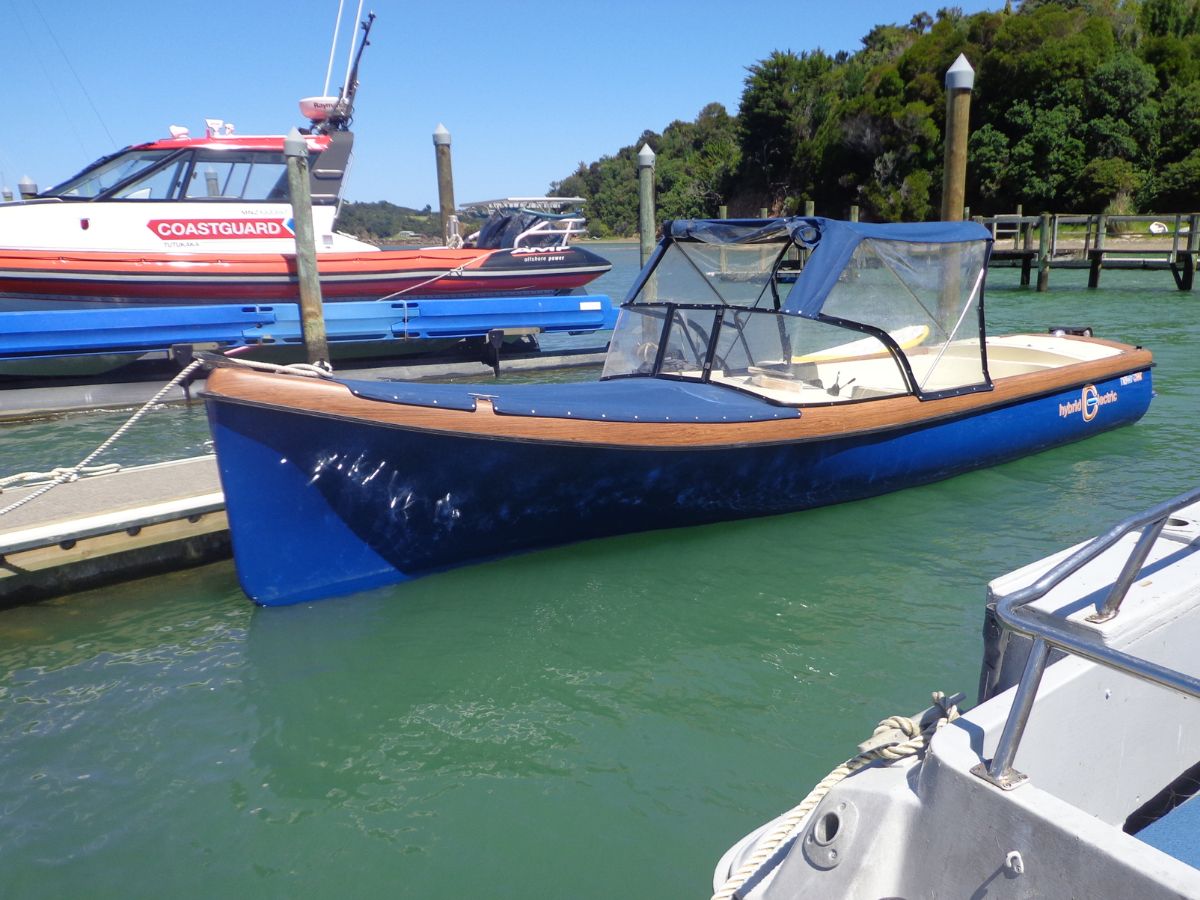
Heath enjoyed years exploring lakes and coastal waters before selling the boat to John McGettigan, who converted her to full electric propulsion. McGettigan has since gone on to run his own electric powerboat company — the very one Boating NZ profiled with Earthling, the E-40 Powercat.
The P25’s story shows how adaptable the Picnic Boat idea can be. Whether powered by petrol or batteries, its essence remains the same: simple, sociable boating in a timeless package.
The 28 Weekender: a yachtsman’s launch
Now, a new chapter is underway with the Dibley 28 Weekender, being built by Tim Lynch-Blosse. A former professional boatbuilder who later worked with Team New Zealand and Southern Spars, Lynch-Blosse commissioned the design for himself and his family.
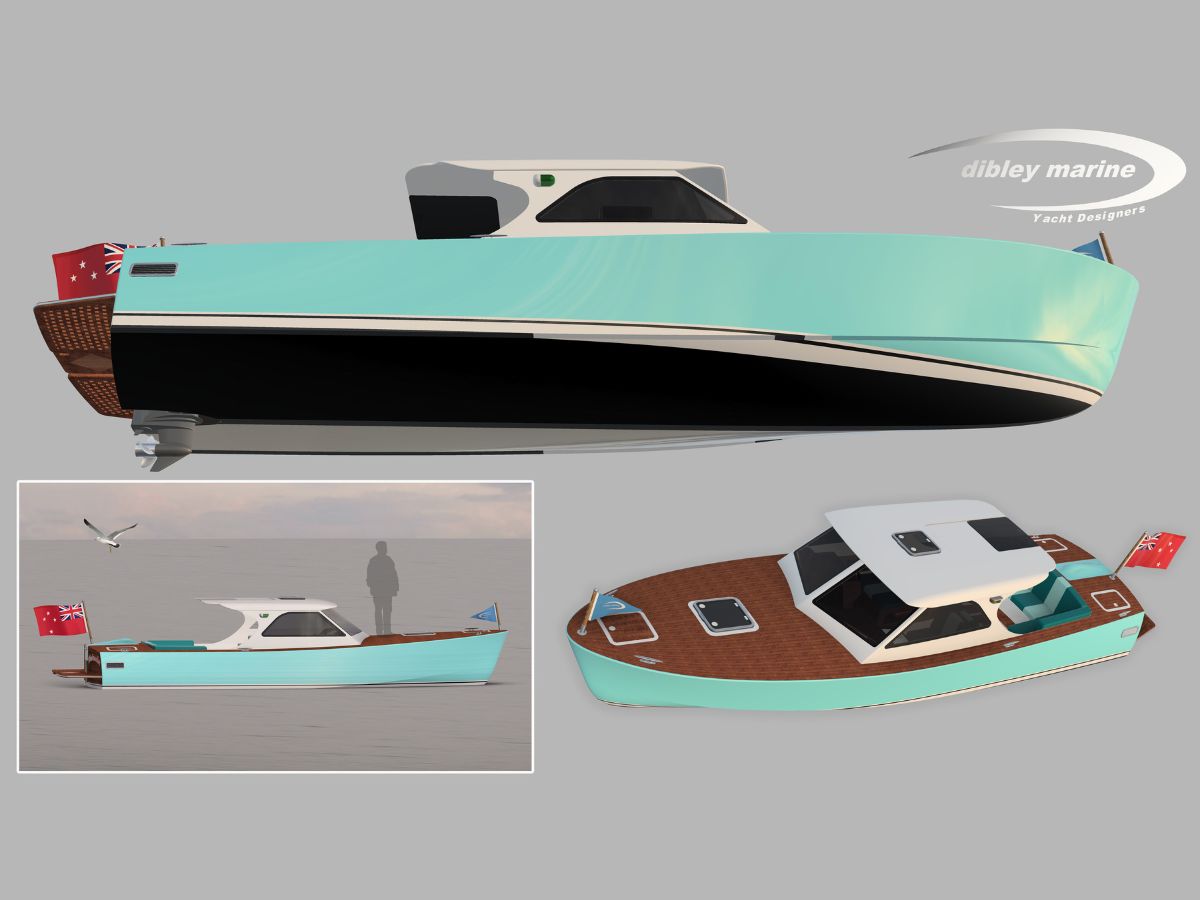
Construction is still at an early stage. Hull frames have just been cut by James Gell at Carbon Concepts in Tauranga, with more kitset components to follow. Lynch-Blosse is approaching the project as a part-time build, aiming for 6–12 months depending on pace and focus.
For him, the goal was absolute simplicity:
“This boat has been a fantastic collaboration between myself and Kevin. The boat truly reflects the word ‘picnic’. I wanted absolute simplicity. Lightweight, easily driven, and above all a boat you couldn’t stop looking at.” — Tim Lynch-Blosse
The 28 is designed for day trips and short weekends on Auckland’s Waitematā Harbour and the Hauraki Gulf. Power comes from a hidden outboard, though inboard and jet options are available. At just 900kg lightship, it promises sprightly performance, topping out at 23 knots on 90hp.
Dibley calls it a “yachtsman’s launch”, a boat that borrows the grace of a classic runabout but delivers the practicality of modern materials — ply and glass in this case, making kitset building a possibility.
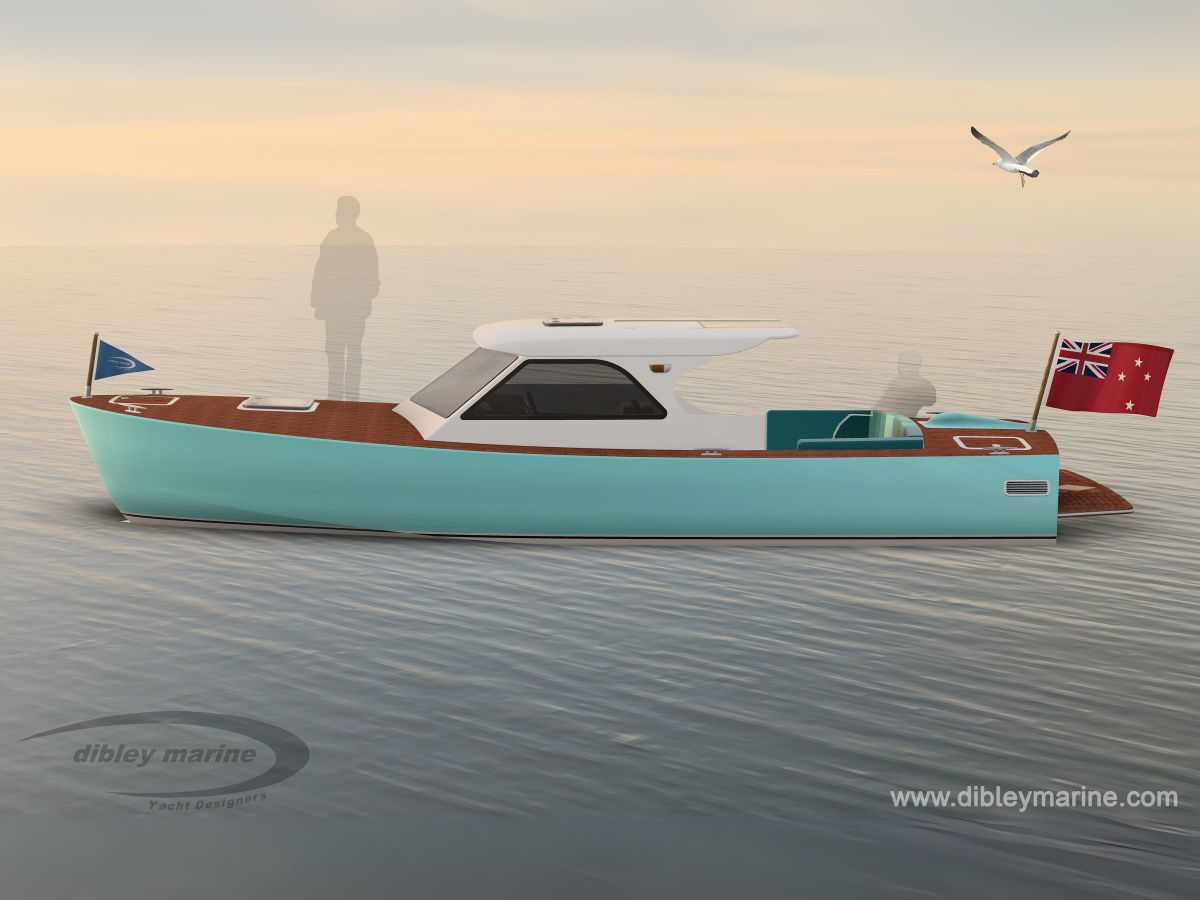
The 35 Weekender: bridging tradition and performance
Between the compact 28 and the larger 52 lies the Dibley 35 Weekender — a design that balances traditional looks with modern performance. Created for owners who wanted something fast, comfortable, and unmistakably classic, the 35 carries Dibley’s hallmark blend of practicality and elegance.
Its moderately deep-V hull, wide chine flats, and low beam-length ratio give it a smooth, confident ride at sea. Powered by a single 315-horsepower jet drive, it cruises comfortably at 25 knots and can reach 35 knots at full speed.
As with all Dibley Picnic Boats, the emphasis is on versatility. Various interior and cockpit layouts are available, from open social spaces to enclosed saloons. Most configurations feature a forward V-berth for two and a convertible saloon table that forms an additional double berth.
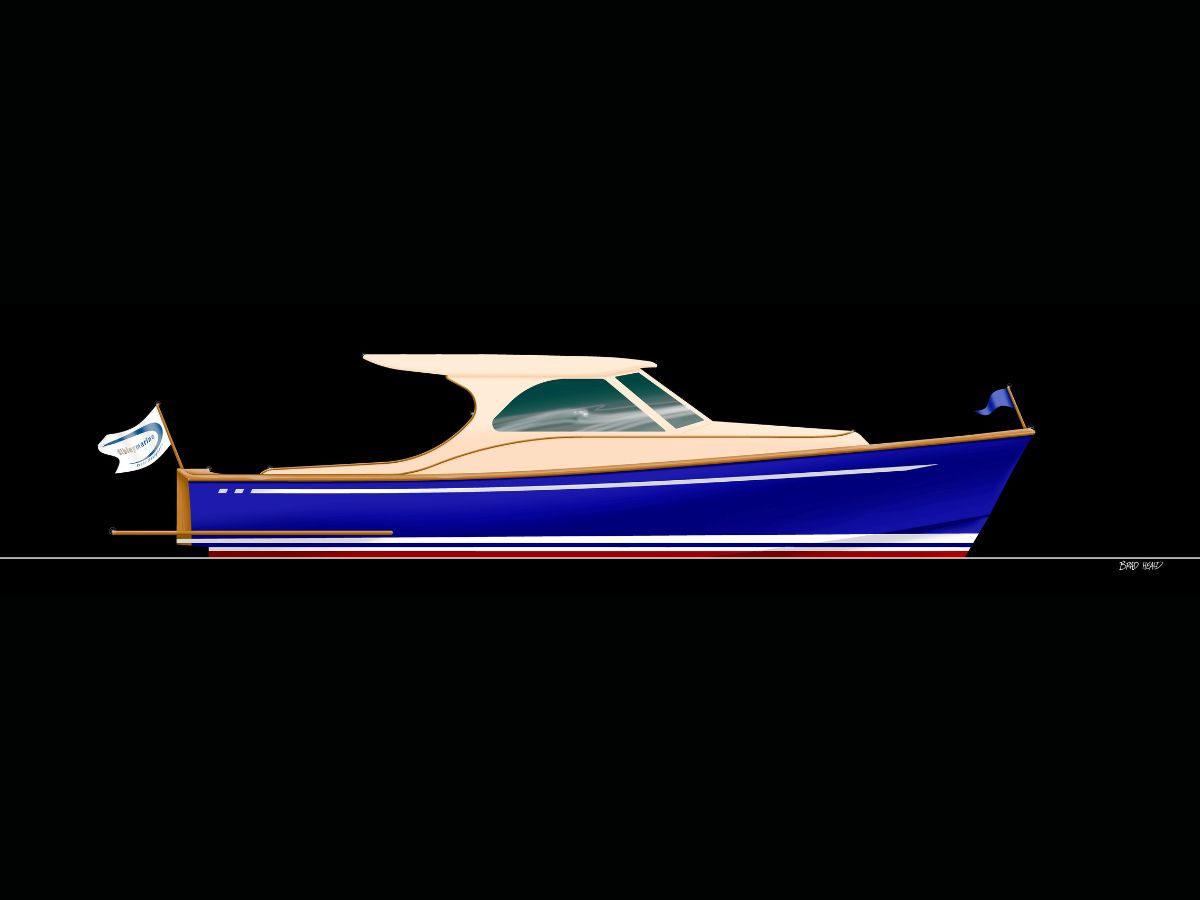
Owners can add clears aft of the saloon for shelter in poor weather, while an aft entertaining area includes barbecue options, seating layouts, and a boarding platform for easy dinghy access.
The 35 Weekender shows Dibley’s philosophy in full scale — a boat that looks timeless yet feels entirely modern, designed to explore bays and harbours beyond the reach of traditional prop-driven launches thanks to its jet propulsion.
The 52 Weekender: coastal cruising in comfort
At the top of the range lies the Dibley 52 Weekender, drawn up for an Auckland couple who wanted speed and seaworthiness for Bay of Islands cruising. With Kevlar and advanced E-glass laminates specified by structural engineers High Modulus, it was to be a high-tech build capable of 34 knots.
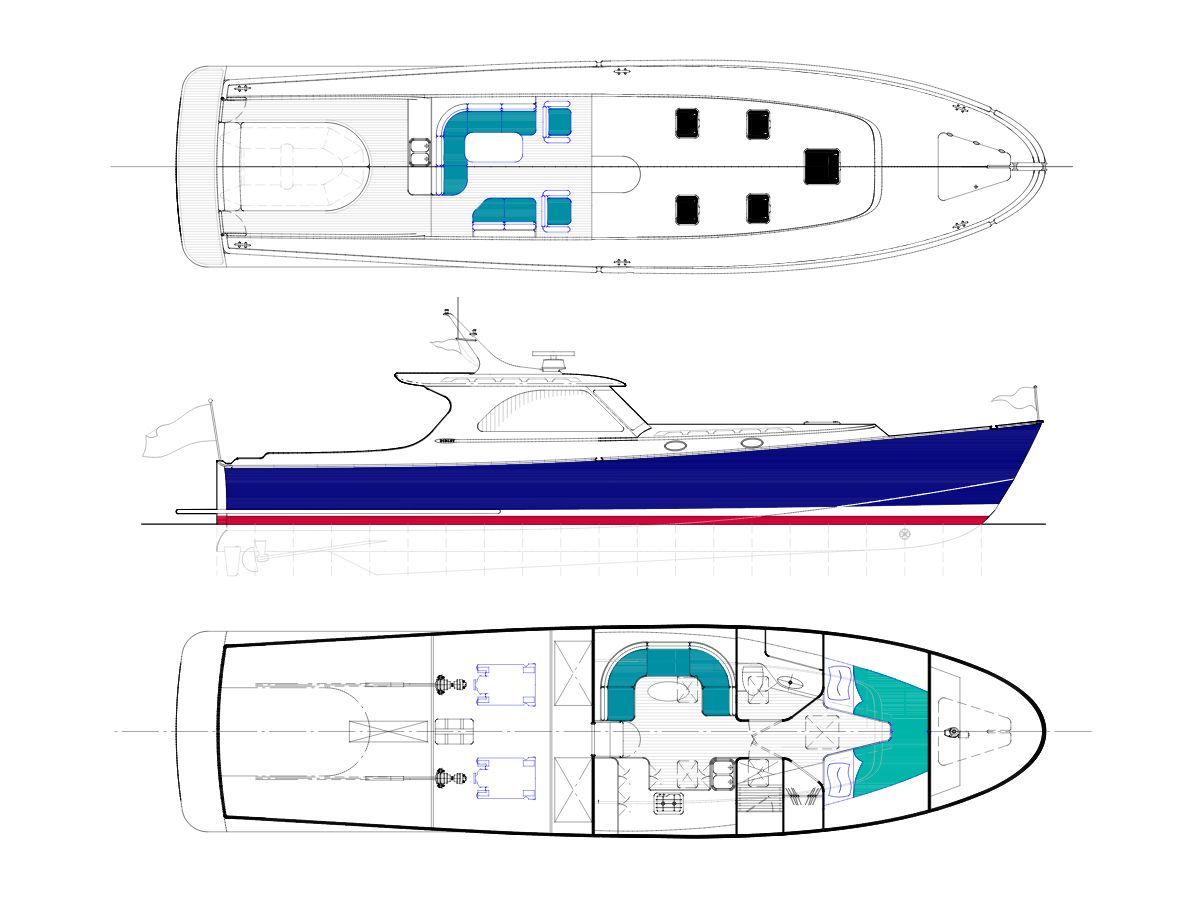
The original brief called for a one-cabin layout, though two-cabin options and jet drive propulsion are on the table. While the 52 never left the design stage — the clients ultimately chose a larger hull that became the Dibley modified Salthouse-built Havana — it remains a window into how far the Picnic Boat idea can be stretched.
Custom design, Kiwi ethos
What sets the Dibley Picnic Boats apart is how individually tailored they are.
“All our designs are custom or at least semi-custom. We can customise pretty much everything from build material, layouts, propulsion — jet, outboard, inboard, electric — and everything in between.” — Kevin Dibley
The approach is pragmatic. Unlike their US counterparts, which emphasise cabins for cold-weather use, New Zealand Picnic Boats reflect a culture of outdoor living.
“In NZ we spend more time in the cockpit, so that had to be a consideration. We style with a nod to the past but give them a Kiwi twist, smoothing the cockpit–interior flow.” — Kevin Dibley
The designer’s philosophy
Dibley sees the Picnic Boat as much about lifestyle as design.
“The Picnic Boat brings back the simplicity of bygone days — gunkholing up small creeks, meandering from bay to bay, spending nights in coves. The idea is for our owners to leave work on a Friday and be tucked up in a bay just a couple of hours later. Turnkey simplicity.” — Kevin Dibley
He acknowledges the influence of Hinckley and the lobster-boat lineage but notes the Kiwi interpretation has its own flavour. Even Hinckley once wrote to him in the 1990s, claiming rights over the style. “I felt the letter was a compliment in some ways,” he says with a smile.
A niche for dreamers
For now, the Picnic Boat remains a niche in New Zealand. Home builders are fewer, and professional builds push costs out of reach for many. With economic headwinds, Dibley admits there are no new Picnic commissions on the books beyond Lynch-Blosse’s 28.
But perhaps that scarcity is part of their charm. These are boats for those who want something personal, crafted with care, and designed for evenings at anchor with a glass of wine in hand.
More than a picnic
From the P25 to the new 28, the refined 35, and the ambitious 52, the Dibley Picnic Boats show how a global idea can be reinterpreted with local character. They are boats that reward simplicity, beauty, and time well spent afloat.
Like a Hinckley in Maine, a Dibley on the Waitematā or in the Bay of Islands is more than a day boat. It is a floating expression of leisure, family, and the joy of keeping things simple.
“The Picnic Boat captures the spirit of simpler times — gunkholing quietly up creeks and into hidden bays, meandering from place to place and spending the night in a sheltered cove. It’s about keeping boating effortless, just as Tim described. The idea is that you can leave work on a Friday and, a couple of hours later, be anchored in a favourite bay, everything ready to go — true turnkey simplicity.” — Kevin Dibley








